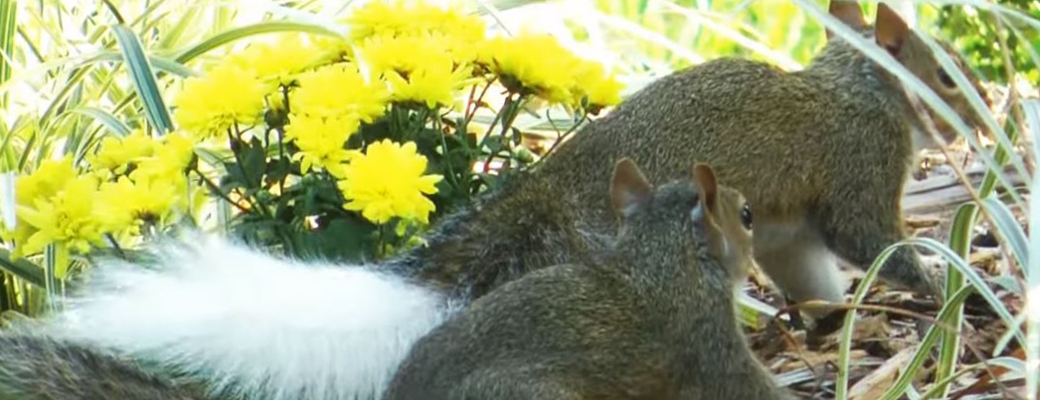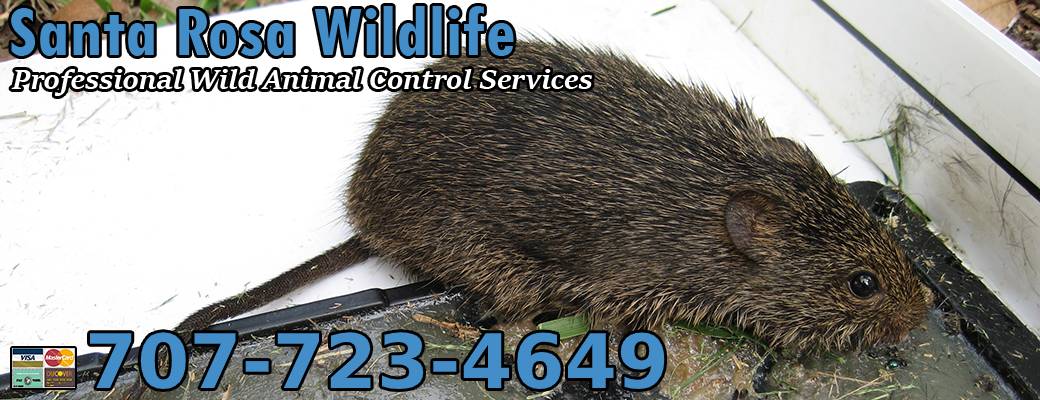Santa Rosa Wildlife Control - 707-723-4649

Wildlife Trapping
When it's necessary to remove animals, we focus on humane and effective trapping and relocation.

Home Repairs
A critical step - the identification and repair of any and all wildlife entry points into the home.

Animals in Attic
We specialize in the removal of animals in the attic - squirrels, raccoons, rats, mice, bats, and more.

No Poisons!
We never use poisons in any part of our wildlife control, including rodent control. Poisons don't work!
We are Santa Rosa Wildlife, and we solve conflicts between people and wild animals. From squirrels in your attic, to raccoons in your trash, to bats, rats, birds, and snakes, we do it all. We specialize in safe and effective solutions to California critter problems. We service the greater Santa Rosa region, and we offer fast service - we can usually schedule a same-day appointment. Give us a call at 707-723-4649 any time, 24/7, and we will discuss your unique wild animal problem, and give you a free price quote over the phone. We're ready to take your call now!
Our service range: We service Mendocino County, Lake County, Napa County, Solano County, Marin County, Contra Costa County, and more. We also service Bloomfield, Fulton, Penngrove, Bodega, Geyserville, Roseland, Glen Ellen, Salmon Creek, Boyes Hot Springs, Graton, Sea Ranch, Carmet, Guerneville, Serena del Mar, Jenner, Temelec, Eldridge, Kenwood, Monte Rio, and more.
Santa Rosa Wildlife Education: What Are A Rodent’s Mating Habits?
Rodents are actually an entire class of animals, which means that not all rodents will have the same mating habits. Some rodents are slightly larger, like porcupines, while others are smaller, such as mice. This leads to an incredible range in terms of the time of year rodents mate, how long the gestation period is, and other factors related to their reproductive cycle. Instead of trying to group all rodents together, it makes more sense to look at each one’s mating habits separately.

Chipmunks
Generally speaking, eastern chipmunks tend to breed more frequently than western chipmunks. Both types of chipmunks mate during the spring. The difference is that eastern chipmunks may mate again if the weather is still warm during early fall. They would then go into their semi-hibernation in the winter. Most females start breeding within a year of being born and in some cases, they may even do so at three months old.
During mating, the female chipmunk makes chipping sounds to let males know she is ready and they then compete for her. Both types of chipmunks have a gestational period of 31 days, at which point they give birth to one to eight offspring, although there are typically four or five babies. Female chipmunks provide all the care for their babies until they first leave the burrow at four to seven weeks.
Groundhogs
Groundhogs typically start their mating season during the early spring, which is when they come out of hibernation. Pregnancy will typically last between 31 and 33 days, meaning the young are typically born in late March to early April. At the end of the gestational period, groundhog moms will have between two and nine kits. They are born blind, helpless, and naked. They open their eyes at four weeks and stay with their mother for around two months before they become fully independent.
Mice
Mice are known for breeding quickly and this is partly because they reach their sexual maturity at six weeks for females or seven to eight weeks for males. When they are ready to mate, females will produce pheromones to attract males and the males emit ultrasonic mating calls. Female mice are able to have 15 litters in a single year and can actually get pregnant within a day after giving birth. Most of the time, the gestational period will last 19 to 21 days, at which point 10 to 12 pups are born. Mice will breed less often due to malnutrition, cold environments, and a lack of nesting material. If a female mouse doesn’t have enough food or water, is overcrowded, or there isn’t enough nesting material, she may abort or abandon her babies, or even eat them.
Porcupines
Porcupines don’t have a breeding season but will only have a single litter every year. The female begins courtship when she presents herself and flattens her spine. Porcupines are usually pregnant for 11 days and have one to four young. They also prepare a nest before giving birth.
Rats
Like mice, rats prepare for giving birth by building nests from nearby materials. Rat nests may include trash, paper, branches, and grass and are usually found in crevices. Female rats are able to mate 500 times in just six hours and this contributes to brown rats’ ability to have 2,000 offspring annually. Brown rats typically have eight or nine young at a time, but can have 22. Tropical rats typically have smaller litters of one to six babies. Gestation lasts between 21 and 26 days and rats are usually ready to reproduce at about three months of age.
Squirrels
The various species of squirrels found in North America have similar reproductive habits, but with a few key differences. Fox squirrels, for example, will breed year round and males compete to figure out which one can mate first. Female fox squirrels typically mate with several males in a single breeding period. Fox squirrels usually only have one litter each year, although they may have two. Ground squirrels only mate once annually with the mating season lasting a few weeks following hibernation. Males and females will mate with several partners and a litter can actually have multiple fathers.
Flying squirrels typically mate during the early spring and again during late summer. Red squirrels are unique in that the females only have a single fertile day for every 105-day breeding season. Dominant males chase the female squirrels before mating multiple times. Conception will usually occur right away. There are usually two litters of red squirrels each year, although some may only have one. Most litters have four babies, but they can have eight. Gray squirrels have similar mating habits, but are typically chased by a group of males. They have two annual breeding periods, during the mid-summer and late winter.
Depending on the type of squirrel, the gestational period is typically 25 to 45 days and the female will have up to 15 babies in a litter. It is more common, however, for litters to include two to seven offspring depending on the type.
Previous Education Articles
Common Snakes of California
Do wild Santa Rosa animals make good pets?
All about the Santa Rosa opossum tail and what it is used for
How to get Santa Rosa rodents out of a wall?


